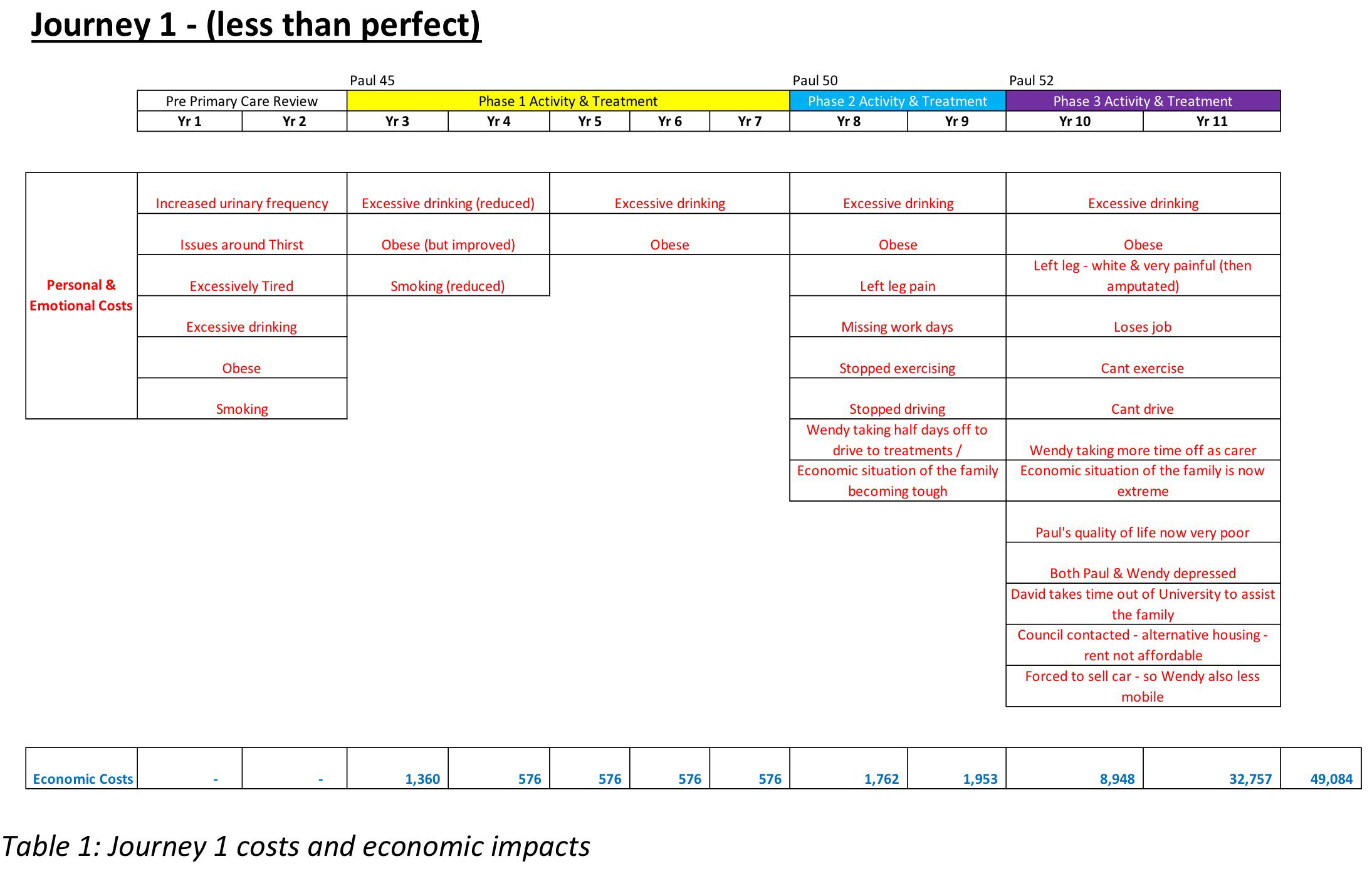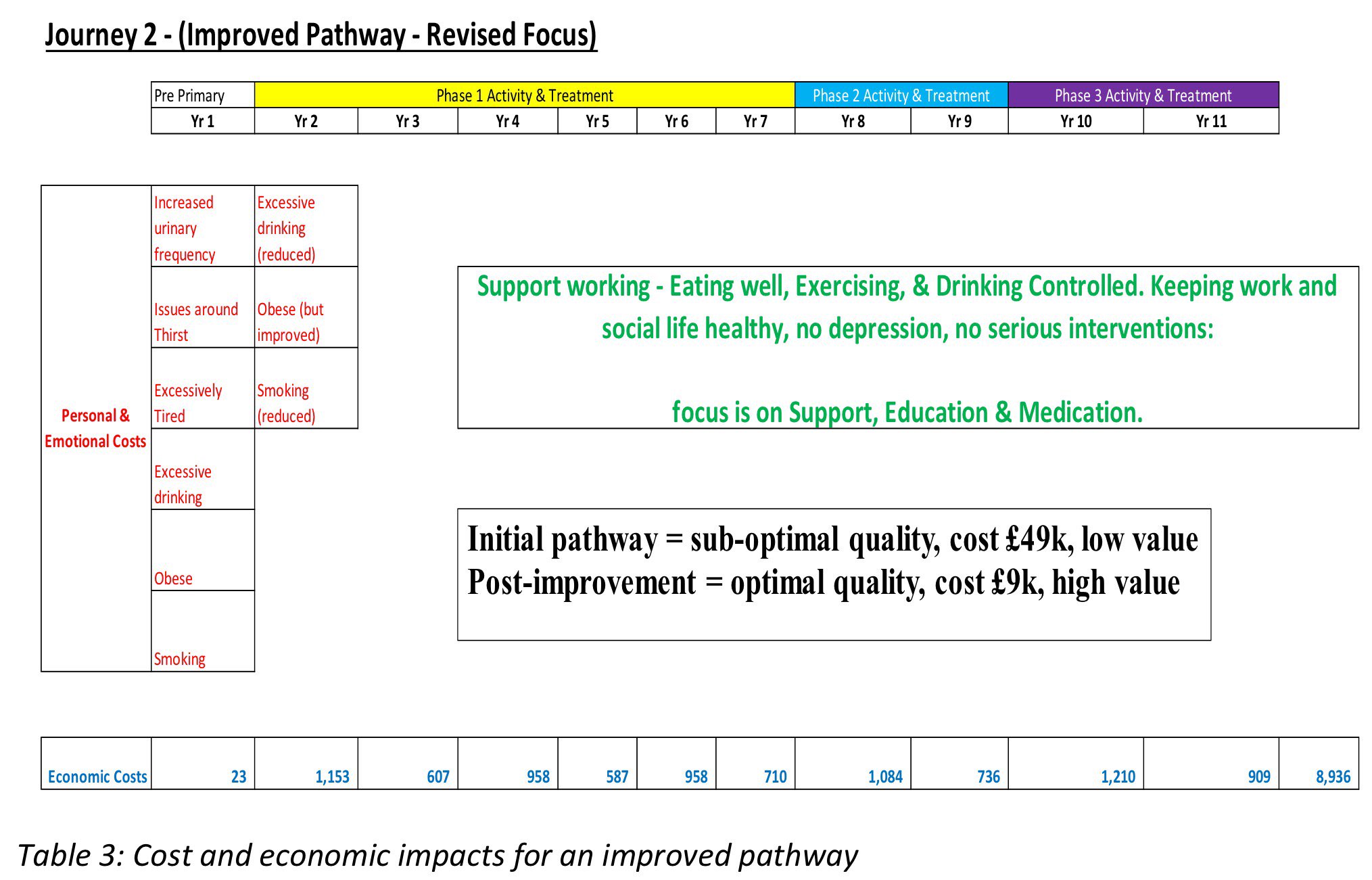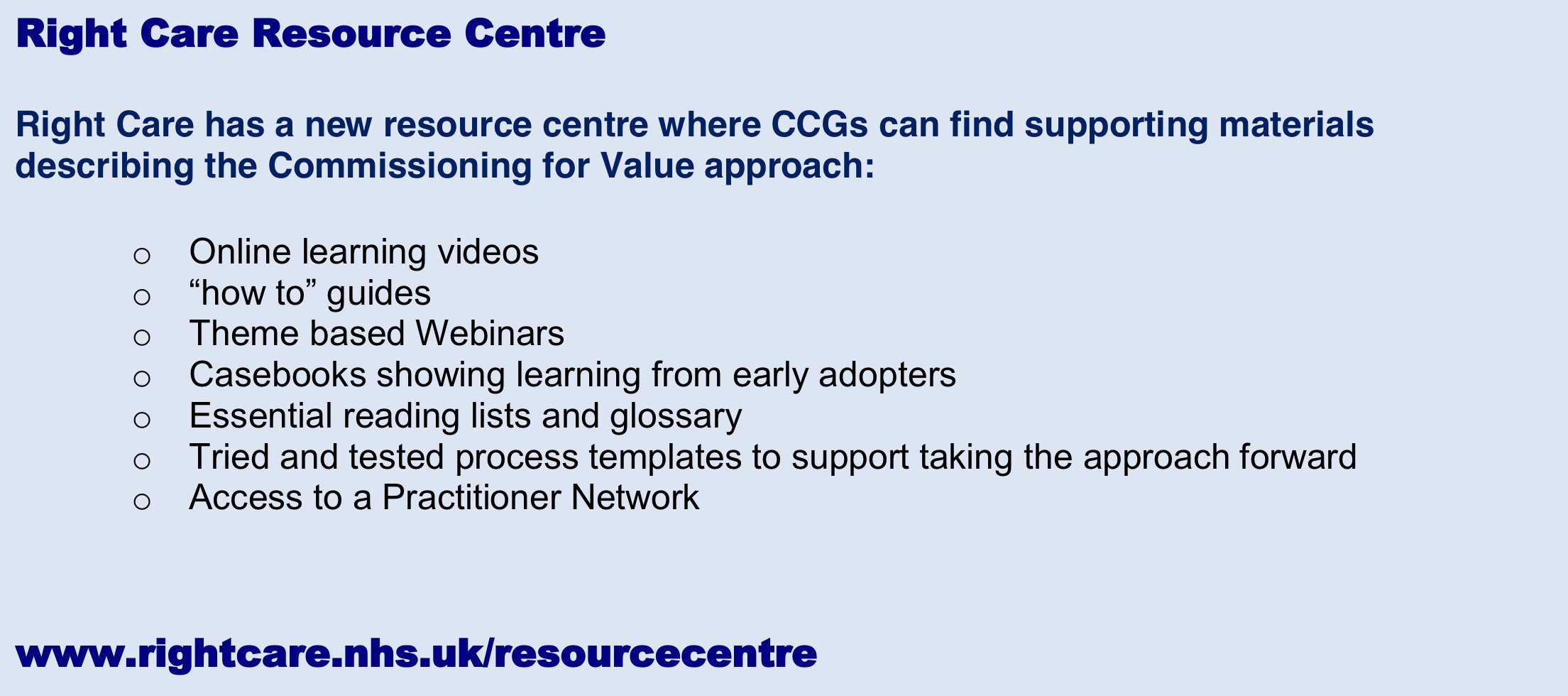The Paul Adams “sliding doors” case study is a powerful story to show the differences in human and economic costs.
Paul Adams Scenario is the story of Paul’s experience of a diabetes care pathway, and how it could be so much better. In this scenario we examine a typical long term condition pathway, comparing a sub-optimal but typical scenario against an ideal pathway.
At each stage we have modelled the costs of care, both financial to the commissioner but also the impact and cost on the patient, family and their contribution to society. We show how the Right Care methodology can help clinicians and commissioners to improve the value of the care pathway.
Introduction More than 3 million people in the UK are currently diagnosed with type 2 diabetes and the prevalence is increasing. Type 2 diabetes is associated with significant clinical and social consequences. Type 2 diabetes has a long pre-clinical phase, with the condition remaining undiagnosed for many years in a significant number of cases. A group of conditions defined by blood glucose level that fall between normal and those defining type 2 diabetes are typically known as Impaired Fasting Glucose (IFG) and Impaired Glucose tolerance (IGT) - risk factors for developing type 2 diabetes
The York Health Economic Consortium estimated in 2012 that the direct costs of treatment for type 2 diabetes was £8.8 billion, which includes treatment, intervention and complications. The indirect costs, such as those related to increased death and illness, work loss and the need for informal care, were estimated at £13.9 billion. Complications accounted for 79% of the NHS spend on type 2 diabetes
Introducing Paul Adams Paul Adams is a 45 year old bricklayer working for a local employer. Like many of his peers, he smokes 10 cigarettes per day and drinks 4 pints a day. He is overweight, with a BMI of 31. Paul is married to Wendy, 42, who works as a Barmaid and he has a 16 year old son, David, at secondary school. Paul lives in a council house in a small village which is 17 miles from the nearest District Hospital. The village has only one shop with limited food options. Paul is not untypical of a white, working class male and many GPs will recognise the stereotype. In the UK it is estimated that there may be 2 million Paul’s who may be on the way to developing Type 2 Diabetes because of their lifestyle.
Paul’s Journey Paul’s journey starts, as with many men, when his wife nags him to go to see the GP having had for two years symptoms of increased urinary frequency, getting up at night to have a wee... You can read the whole case study here http://www.rightcare.nhs.uk/downloads/Right%20Care%20for%20Populations%20-%20Paul%20Adams%20Scenario%20-%20final.pdf
The study identifies two care pathways - decide for yourselves which one you would prefer

 We are now looking to undertake several more LTC studies to map out pathways in a similar way. Although the feedback for the Diabetes study was very positive, we would like to receive any constructive feedback points to help us shape future work; we are always looking to improve where possible.
We are now looking to undertake several more LTC studies to map out pathways in a similar way. Although the feedback for the Diabetes study was very positive, we would like to receive any constructive feedback points to help us shape future work; we are always looking to improve where possible.Any questions or comments, please contact [email protected]
or view http://bit.ly/DiabetesRC


